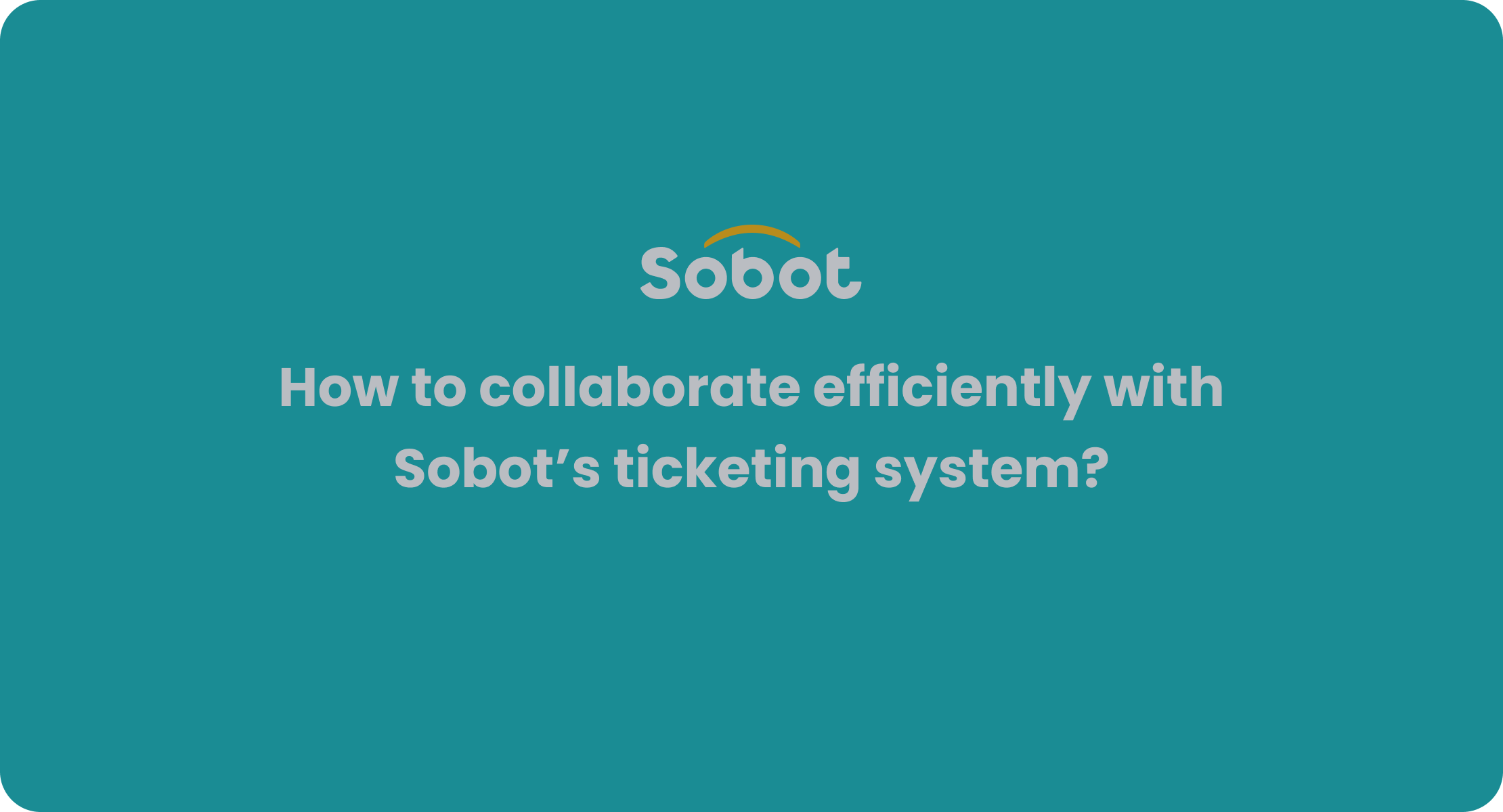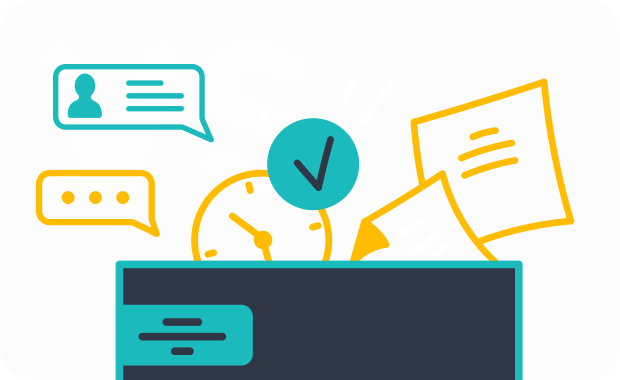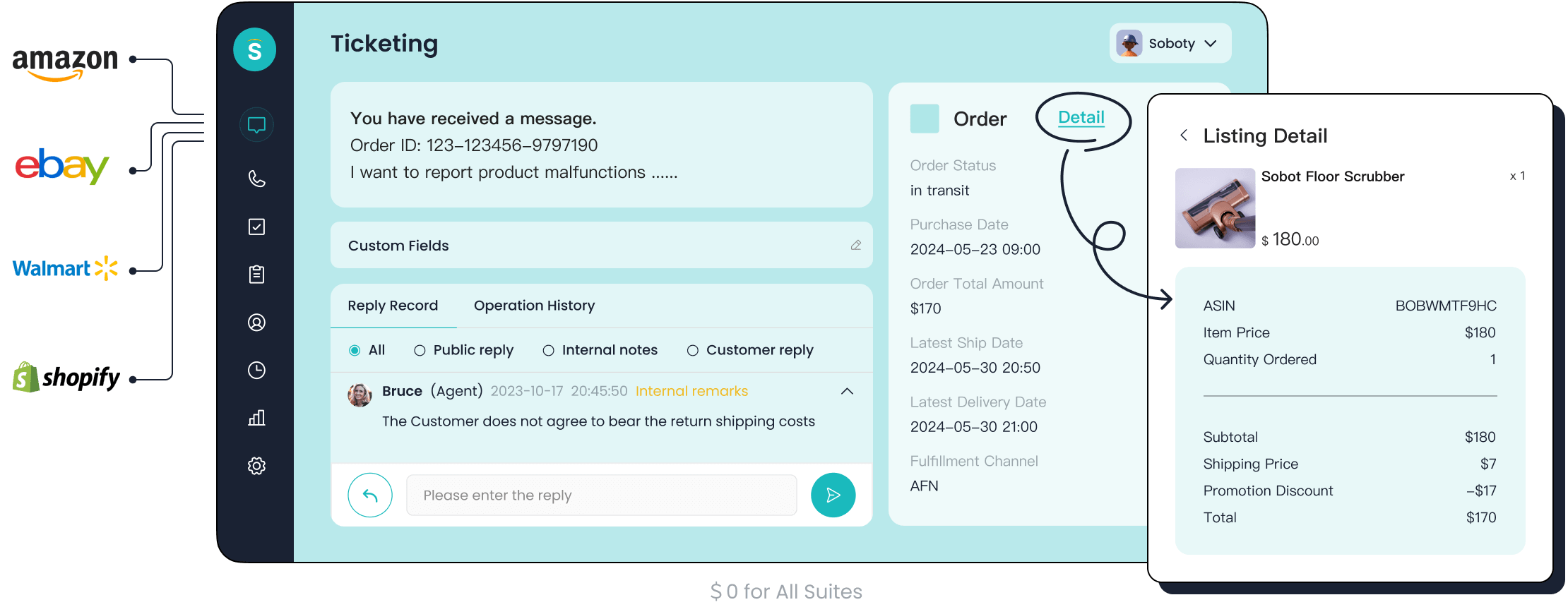Mastering SMART Client Service Objectives for Your Organization

Clear client service objectives help you increase customer satisfaction and improve how your team works. When you use smart goals, you make each customer interaction more focused and effective. With over 6 million daily online communications, Sobot empowers you to set smart objectives and track your progress. Sobot AI and the Sobot call center give you powerful tools to support your customer goals. When your team shares the same goals, you see better results and happier customers.
Client Service Objectives

Definition
Client service objectives are clear goals that guide how you and your team serve customers. These objectives help you focus on what matters most—making sure every customer gets the support they need. You set these objectives to improve the way your team works and to create a better customer experience. When you define client service objectives, you give your team a roadmap for success. These goals can cover many areas, such as response times, problem resolution, and customer satisfaction.
You might see client service objectives like these in action:
- Responding to customer questions within a set time.
- Solving issues quickly and efficiently.
- Providing support on different channels, like chat, email, or phone.
- Using tools like Sobot’s Ticketing System to track and manage requests.
- Measuring how happy customers are after each interaction.
Setting these objectives helps you know what to aim for and how to measure your progress.
Importance
Client service objectives play a big role in your business success. When you set clear goals, you help your team deliver better service and build stronger relationships with customers. Many top companies, such as Apple and Ritz-Carlton, focus on objectives like fast response times, personalized care, and reliable support. These companies show that strong client service objectives lead to loyal customers and positive feedback.
Here are some reasons why client service objectives matter:
- They help you deliver quick solutions and keep customers happy.
- They encourage your team to provide consistent, high-quality service.
- They let you track important metrics, such as Customer Satisfaction Score (CSAT) and First Contact Resolution Rate.
- They support long-term customer loyalty and advocacy.
- They make it easier to collect and use customer feedback for improvement.
Did you know? A Salesforce study found that 89% of consumers are more likely to buy again after a positive customer service experience. (source)
When you use tools like Sobot’s omnichannel platform, you can manage all your client service objectives in one place. Sobot helps you automate tasks, measure results, and give customers the support they expect. By focusing on these objectives, you create a better experience for every customer and help your business grow.
SMART Goals Framework

What is SMART?
You want your team to reach clear targets. The smart goal framework helps you do this by making every goal easy to understand and track. When you use smart goals, you set your team up for success. The smart approach breaks down each goal into five parts:
- Specific: You define exactly what you want to achieve. You answer questions like what, who, where, and why. This step removes any confusion.
- Measurable: You set numbers or criteria to track progress. For example, you might aim to increase customer satisfaction by 10%.
- Achievable: You make sure your goals are realistic. You look at your resources and past results before you decide.
- Relevant: You connect your goals to your company’s mission. Every goal should help your business move forward.
- Time-bound: You set a deadline. This helps your team stay focused and motivated.
Tip: When you use the smart goal framework, you make it easier for everyone to know what success looks like.
Why Use SMART in Client Service?
Smart goals give you a proven way to improve your client service. When you set smart goals, you help your team focus on what matters most for the customer. You can measure progress, celebrate wins, and adjust quickly if things change. Many studies show that smart goals help teams stay motivated and organized.
Here is a table that shows why smart goals work well in client service:
| Aspect | Why It Matters |
|---|---|
| Goal Quality | Smart goals make it easy to see if you reached your target. |
| Measurement Challenges | You can track numbers like response time or customer satisfaction. |
| Practitioner Factors | Smart goals help your team build confidence and skill. |
| Client Involvement & Readiness | Involving the customer in setting goals keeps them engaged and motivated. |
| Training & Support | Smart goals show where your team needs more training or support. |
| Application Context | You can use smart goals for both quick fixes and long-term improvements. |
| Implications | Regular review of smart goals helps you stay on track and meet customer needs. |
When you use Sobot’s Ticketing System, you can set smart goals for response times, ticket resolution, and customer feedback. The system tracks your progress and gives you data to improve. Smart goals help you deliver better service and keep your customers happy. You can learn more about setting smart goals for your team by visiting Sobot’s official website.
Set SMART Goals
Setting SMART goals helps you and your team focus on what matters most in client service. When you use the SMART framework, you make your goals clear, trackable, and achievable. This section will guide you through each part of the SMART process. You will learn how to set smart goals that drive real results for your organization.
Specific
You need to make your goals as clear as possible. Vague goals can confuse your team and slow down progress. When you set smart goals, start by defining exactly what you want to achieve. Ask yourself: What is the goal? Who is involved? Where will it happen? Why is it important?
Tip: Use action words and numbers to describe your specific objectives.
For example, instead of saying "Improve customer service," you can say, "Respond to all customer emails within four hours using Sobot’s Ticketing System." This goal tells your team exactly what to do and how to do it.
Here is a table showing best practices for setting specific goals:
| SMART Component | Best Practice Description | Example |
|---|---|---|
| Specific | Define clear and concise goals specifying exactly what to achieve to avoid ambiguity. | "Increase net new client acquisition by 10% in the next quarter." |
When you use Sobot’s Ticketing System, you can set up custom triggers to assign tickets to the right agent. This makes your goals even more specific, such as "Assign all high-priority tickets to senior agents within 10 minutes."
Involve your team when you set smart goals. Ask for their input on what specific objectives matter most. This helps everyone understand the goal and feel responsible for reaching it.
Measurable
You need to track your progress to know if you are moving in the right direction. Measurable goals use numbers or clear criteria. This makes it easy to see if you are on track or need to adjust.
For example, you can set a goal like "Resolve 90% of customer tickets within 24 hours." Sobot’s Ticketing System lets you track metrics such as response time, resolution rate, and customer satisfaction. You can use these numbers to measure your success.
Some ways to make your goals measurable:
- Use quantifiable metrics like "increase customer satisfaction from 85% to 90% within six months."
- Track the number of tickets resolved each week.
- Monitor average response times and first contact resolution rates.
Organizations that use customer service software like Sobot can automate tracking. The system provides real-time analytics, so you always know how close you are to reaching your smart goals. Regularly review your progress with your team. Celebrate small wins and adjust your approach if needed.
Note: Measurable goals keep your team motivated and focused. They also make it easier to communicate progress to stakeholders.
Achievable
You want your goals to challenge your team, but they must also be realistic. If you set goals that are too hard, your team may feel discouraged. If your goals are too easy, you miss out on growth.
To check if your goals are achievable, look at your resources, team size, and past performance. For example, if your team usually resolves 70% of tickets within 24 hours, aiming for 90% is a good challenge. Aiming for 100% might not be realistic right away.
Here are steps to make sure your goals are achievable:
- Review your current performance data in Sobot’s analytics dashboard.
- Consider your team’s workload and available tools.
- Set a goal that pushes your team but stays within reach.
Example: "Increase monthly ticket resolution rate by 10% over the next quarter using Sobot’s automated workflows."
Break large goals into smaller steps. For instance, if your main goal is to improve customer satisfaction by 10%, start by focusing on faster response times, then move to improving ticket resolution quality.
Regular team check-ins help you spot challenges early. Adjust your goals if you find they are too easy or too hard. This keeps your team motivated and on track.
Relevant
Your goals should connect to your company’s bigger mission. Relevant goals help your business grow and improve customer experience. When you set smart goals, ask yourself if the goal supports your organization’s vision.
For example, if your company wants to become a leader in customer satisfaction, your goals should focus on improving service quality and response times. Sobot’s Ticketing System helps you align your goals with business needs by providing data on customer feedback and service trends.
Ways to ensure your goals are relevant:
- Align goals with key business outcomes like customer retention or Net Promoter Score (NPS).
- Use customer feedback from Sobot’s analytics to guide your goal-setting.
- Work with other teams to make sure your goals support company-wide objectives.
Note: Relevant goals inspire your team and show them how their work matters to the company’s success.
You can use OKRs (Objectives and Key Results) to break down large goals into smaller, actionable steps. For example, set a key result to "Reduce customer churn by 5% in six months by improving ticket response times."
Time-Bound
Every goal needs a deadline. Time-bound goals create urgency and help your team stay focused. When you set smart goals, always include a clear timeframe.
For example, "Increase customer satisfaction score from 85% to 90% within six months" gives your team a target date. Sobot’s Ticketing System lets you set SLA (Service Level Agreement) reminders, so agents know when tickets need attention.
Tips for setting time-bound goals:
- Use calendars or task managers to track deadlines.
- Break large goals into weekly or monthly milestones.
- Communicate deadlines clearly to your team.
- Review progress regularly and adjust timelines if needed.
Tip: Setting realistic deadlines with buffer time helps your team handle unexpected challenges.
When you involve your team in setting deadlines, you build commitment and accountability. Use Sobot’s reporting tools to monitor progress and keep everyone on track.
Involving Teams and Breaking Down Large Goals
You get better results when your team helps set smart goals. Involve everyone in the process. Ask for ideas and feedback. This builds ownership and makes it easier to reach your targets.
Break large goals into smaller, manageable steps. For example:
- Define the main goal, such as "Improve customer self-service rate by 20% in one year."
- Set monthly milestones, like "Launch new FAQ section in month one" and "Promote chatbot usage in month two."
- Assign tasks to team members based on their strengths.
- Use Sobot’s analytics to track each milestone.
Regular check-ins help you spot problems early. Celebrate each milestone to keep your team motivated.
Remember: When you set smart goals together, you create a culture of teamwork and continuous improvement.
Why SMART Goals Work
When you set smart goals, you improve communication, motivation, and accountability. You make better decisions and keep your team focused on what matters most. Sobot’s Ticketing System and omnichannel solutions give you the tools to track, measure, and achieve your goals.
Here is a quick summary of best practices for each SMART component:
| SMART Component | Best Practice | Example |
|---|---|---|
| Specific | Define clear, concise goals | "Respond to all tickets within 4 hours" |
| Measurable | Use concrete metrics | "Achieve 90% customer satisfaction" |
| Achievable | Set realistic targets | "Increase resolution rate by 10%" |
| Relevant | Align with business vision | "Improve NPS to support growth" |
| Time-Bound | Set deadlines | "Reach goal by end of Q2" |
By following these steps, you can set smart goals that drive real improvements in your client service operations. Sobot helps you every step of the way, from setting specific objectives to tracking time-bound goals.
Align with Business Strategy
Connect to Company Vision
You want your client service objectives to support your company’s bigger picture. When you align your goals with the company vision, you help everyone move in the same direction. This approach creates a strong link between customer success and business success. You give your team a clear purpose, which makes decision-making easier and more consistent.
Here are some ways aligning your goals with the company vision benefits your organization:
- You create a direct connection between customer success and business growth.
- You build a culture where employees feel motivated and engaged.
- You make it easier for teams to work together and trust each other.
- You help leaders set priorities that support long-term growth.
- You encourage employees to focus on making customers champions of your brand.
Tip: When you connect your goals to the company vision, you help everyone understand why their work matters.
A clear vision also helps you make better choices. For example, if your company wants to lead in customer experience, your objectives should focus on fast response times and high satisfaction scores. You can use frameworks like OKRs (Objectives and Key Results) to track progress and keep everyone aligned.
Integrate with Sobot Solutions
You can use Sobot’s omnichannel and ticketing solutions to make sure your goals support your business strategy. Sobot brings all your customer conversations into one place. You manage emails, chats, social media, and calls from a single platform. This unified approach helps you deliver a seamless customer experience and reach your objectives faster.
Sobot’s ticketing system gives you tools to set, track, and measure your goals. You can automate ticket assignments, set SLAs, and use AI to analyze trends. These features help you reduce agent workload by up to 60% and resolve tickets in under a minute. You also see a 15% increase in conversion rates when you use Sobot’s platform to enhance customer engagement.
Here is a table showing how Sobot’s solutions align your goals with business strategy:
| Sobot Feature | How It Supports Your Goals | Business Impact |
|---|---|---|
| Omnichannel Integration | Centralizes all customer interactions | Improves efficiency and satisfaction |
| AI-Powered Ticketing | Automates workflows and tracks objectives | Reduces workload and boosts accuracy |
| SLA Management | Ensures timely responses to customers | Increases trust and loyalty |
| Analytics & Reporting | Measures progress toward goals | Supports data-driven decisions |
You can use Sobot’s analytics to monitor key metrics and adjust your goals as needed. This helps you stay focused on what matters most for your business and your customers. By integrating Sobot’s solutions, you make sure your objectives always support your company’s vision and drive real results.
Note: Aligning your goals with business strategy helps you build a strong foundation for growth and long-term success. You create a better experience for both your team and your customers.
Real-World Examples

Sobot Ticketing System in Action
You can see the power of SMART client service objectives when you use the Sobot Ticketing System. This platform brings all your customer conversations together, making it easy to manage tickets from email, chat, and social media. You track every issue, set clear priorities, and measure your team’s progress in real time. Sobot’s analytics dashboard gives you over 300 indicators to monitor customer satisfaction, agent performance, and ticket resolution rates.
Many companies use Sobot to improve their client service objectives. For example, Samsung increased agent efficiency by 30% and reached a 97% customer satisfaction score after switching to Sobot. The system’s AI-powered chatbot answers common questions, while complex issues go straight to live agents. You get seamless ticket management, automated routing, and real-time reporting. These features help you reach your SMART goals faster.
| Metric / Feature | Description / Result |
|---|---|
| Omnichannel Integration | All channels unified for better customer management |
| Agent Efficiency Increase | 30% boost in agent productivity |
| Customer Satisfaction (CSAT) | 97% CSAT score achieved |
| Ticket Management & Tracking | Effective prioritization and resolution tracking |
| Real-Time Reporting | Live monitoring of key performance metrics |
| AI-Powered Chatbot | Handles inquiries, reduces human workload |
Tip: Sobot’s ticketing system helps you set, track, and achieve your client service objectives with ease.
OPPO Success Story
OPPO wanted to improve its client service objectives during busy shopping seasons. By using Sobot’s chatbot and ticketing system, OPPO handled more customer requests and improved service quality. The chatbot answered common questions, so human agents could focus on complex problems. Sobot also helped OPPO connect all customer channels and business systems, making data easy to access.
Here are the results OPPO achieved with Sobot:
| Metric | Improvement Achieved |
|---|---|
| Chatbot resolution rate | 83% |
| Positive feedback score | 94% |
| Increase in repeat purchases | 57% |
You can see how Sobot’s solutions help you reach your SMART client service objectives. OPPO’s team now works faster, customers get better answers, and the company sees more repeat business. Sobot’s tools make it simple to measure progress and celebrate success. If you want to boost your customer satisfaction and reach your goals, Sobot gives you the right support.
Implement and Track
Monitor Progress
You need to monitor progress to make sure your smart goals lead to real results. When you set smart goals, you must track progress using clear numbers and facts. Sobot’s analytics tools help you see how your team performs every day. You can check customer satisfaction scores, response times, and ticket resolution rates in real time. This lets you spot trends and see if you need to make changes.
Here are some ways to track progress with Sobot:
- Use dashboards to view live updates on your smart goals.
- Set alerts for important metrics like response time or customer satisfaction.
- Assign team members to own specific goals and track progress together.
- Review reports that show how close you are to reaching your goals.
| Sobot Feature | What You Can Track |
|---|---|
| Real-time Monitoring Dashboard | Progress on calls, chats, and tickets |
| Statistical Reports | Trends in customer satisfaction and speed |
| AI Insight Dashboards | Deep analysis of team performance |
Tracking progress helps you stay focused and keeps everyone accountable.
Adjust Objectives
Sometimes you need to adjust your smart goals based on what you learn. If you see that progress is slow, you can change your goals to fit new needs. Check your key metrics like Net Promoter Score (NPS) and Customer Satisfaction Score (CSAT) often. Hold regular team meetings to review progress and discuss what works.
Follow these steps to adjust your smart goals:
- Look at your progress data from Sobot’s reports.
- Talk with your team about what needs to change.
- Update your goals to match new challenges or opportunities.
- Make sure your smart goals still support your company’s main mission.
When you adjust your goals, you help your team stay motivated and ready for new challenges.
Celebrate Success
When you reach your smart goals, take time to celebrate. Recognizing progress boosts team spirit and helps everyone feel proud. You can praise team members in meetings, give rewards, or share success stories. This makes your team want to keep working hard and reach new goals.
Celebrating progress also helps you keep good employees and build a strong team. When you show that you value smart goals and hard work, your team will stay engaged and ready to succeed.
Tip: Use Sobot’s analytics to highlight achievements and share them with your team. This keeps everyone excited about reaching the next smart goals.
Setting SMART client service objectives gives you clear direction and helps your team stay accountable. You see measurable results because each goal is specific, measurable, achievable, relevant, and time-bound.
- Sobot’s AI-powered tools and omnichannel platform make it easy to set, track, and reach your client service objectives.
- You can monitor progress, adjust goals, and celebrate wins, which keeps your team motivated.
- Start using the SMART framework today to drive continuous improvement and boost customer satisfaction.
When you use SMART client service objectives, you build a culture of clarity, accountability, and success.
FAQ
What are SMART client service objectives?
SMART client service objectives are clear goals you set for your customer service team. You make them Specific, Measurable, Achievable, Relevant, and Time-bound. This method helps you track progress and improve results. Sobot’s Ticketing System makes it easy to set and monitor these objectives.
How do SMART client service objectives improve customer satisfaction?
You use SMART client service objectives to focus your team on what matters most. For example, you can set a goal to answer all tickets within four hours. Studies show that fast responses increase customer satisfaction by up to 33% (source).
Can Sobot help you achieve SMART client service objectives?
Yes! Sobot’s omnichannel platform and Ticketing System help you set, track, and reach your SMART client service objectives. You get real-time analytics, SLA reminders, and automated workflows. These tools help you improve efficiency and customer satisfaction.
How often should you review your SMART client service objectives?
You should review your SMART client service objectives every month. Use Sobot’s analytics dashboard to check your progress. Regular reviews help you spot trends, adjust goals, and keep your team on track.
What is an example of a SMART client service objective using Sobot?
You can set a goal like: “Resolve 90% of customer tickets within 24 hours using Sobot’s Ticketing System.” This objective is specific, measurable, achievable, relevant, and time-bound. It helps your team focus and deliver better service.
See Also
Expert Techniques To Excel In Live Chat Support
How To Successfully Oversee Live Chat Support Teams
Step-By-Step Approach To Deploy Omnichannel Contact Centers